
Mastering the Extremes: The Indispensable Role of a Superlative Sentences Worksheet
English, a language of immense nuance and expressive power, allows us to describe the world in vivid detail. Part of this descriptive capability comes from its system of comparisons: positive, comparative, and superlative degrees of adjectives and adverbs. While positive forms merely state a quality (e.g., "tall"), and comparative forms compare two things (e.g., "taller"), superlative forms take us to the extreme, identifying the absolute highest or lowest degree of a quality among three or more items (e.g., "tallest"). Mastering these "extremes" is crucial for clear and precise communication, and for many learners, a well-designed superlative sentences worksheet is the most effective tool for achieving this mastery.
The Anatomy of Superlatives: A Quick Refresher
Before diving into the utility of a superlative sentences worksheet, let’s quickly review the grammatical rules. Superlatives are formed in two primary ways:

- Adding "-est": For most one-syllable adjectives (e.g., "old" -> "oldest," "fast" -> "fastest") and some two-syllable adjectives ending in -y (e.g., "happy" -> "happiest," "noisy" -> "noisiest"). Remember to double the consonant for CVC words (e.g., "big" -> "biggest").
- Using "most" or "least": For adjectives with two or more syllables that do not end in -y (e.g., "beautiful" -> "most beautiful," "difficult" -> "most difficult") and adverbs (e.g., "slowly" -> "most slowly").
- Irregular Forms: Some adjectives and adverbs have irregular superlative forms that must be memorized (e.g., "good" -> "best," "bad" -> "worst," "far" -> "farthest/furthest," "little" -> "least," "much/many" -> "most").
- The Definite Article "The": Crucially, superlatives are almost always preceded by the definite article "the" because they refer to a unique item or group (e.g., "He is the tallest student in the class," "This is the most interesting book I’ve ever read").

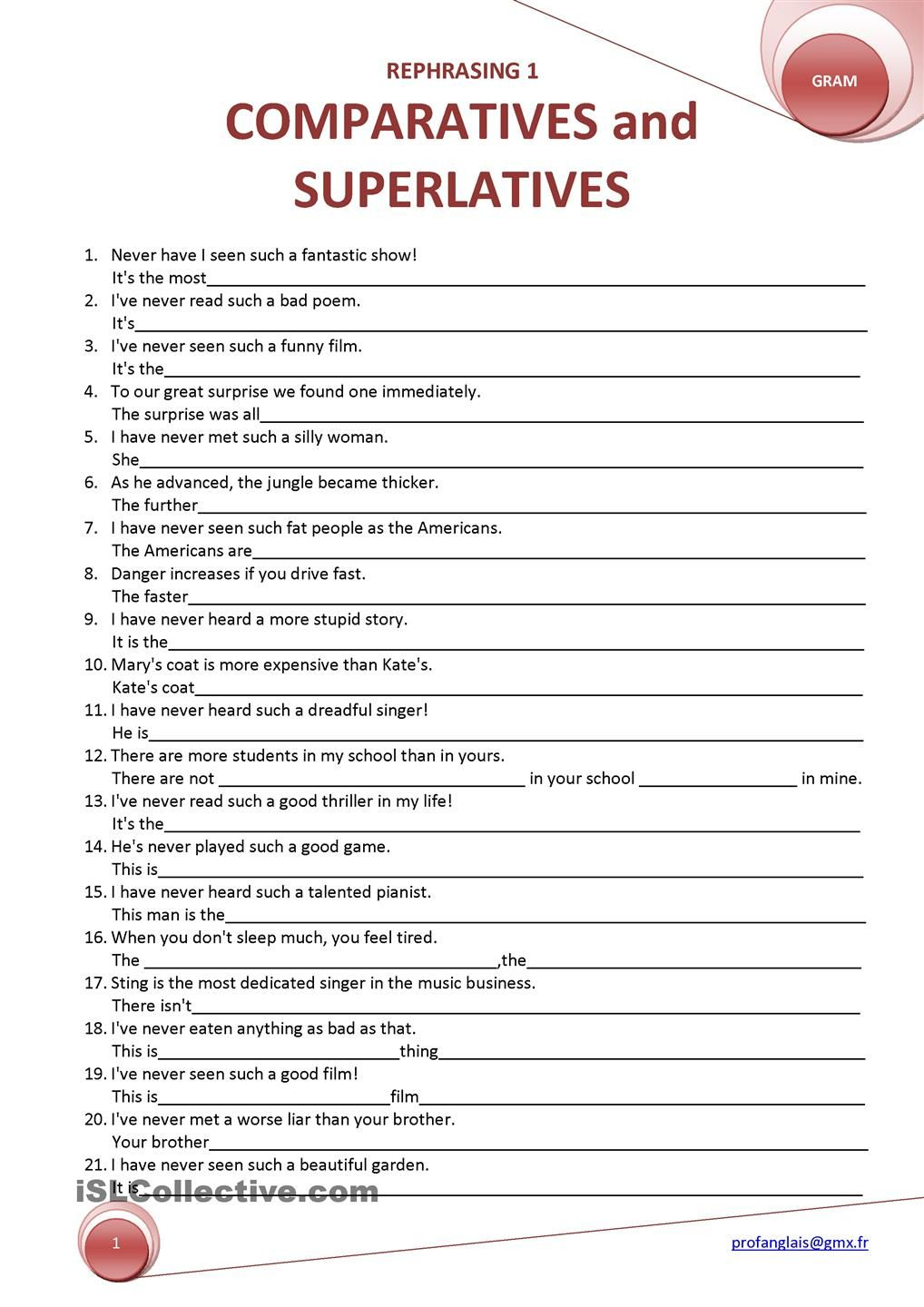

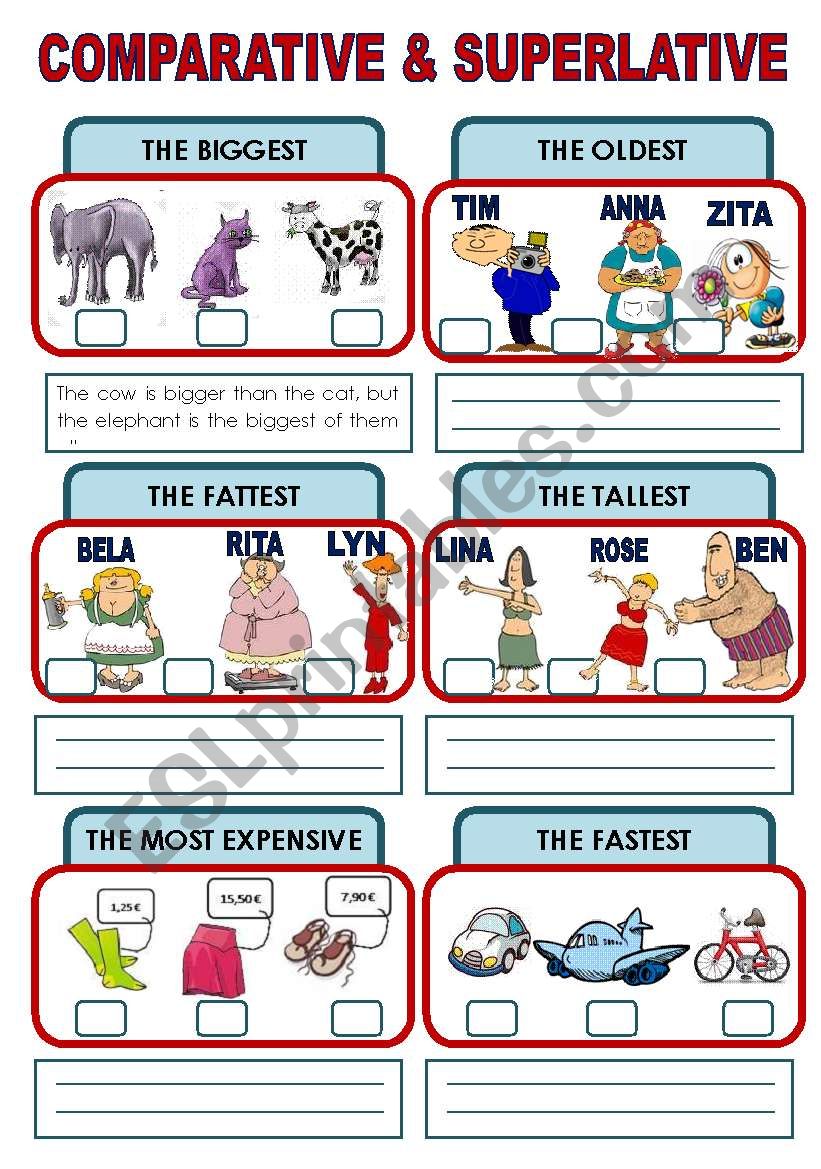
The proper application of these rules, along with the correct choice between comparative and superlative forms, often presents a significant challenge for English language learners (ELLs) and even native speakers refining their grammar. This is precisely where the structured practice offered by a dedicated superlative sentences worksheet becomes invaluable.
Why a Superlative Sentences Worksheet is Indispensable for Learning
The utility of a well-designed superlative sentences worksheet cannot be overstated. It serves multiple critical functions in the language learning process:
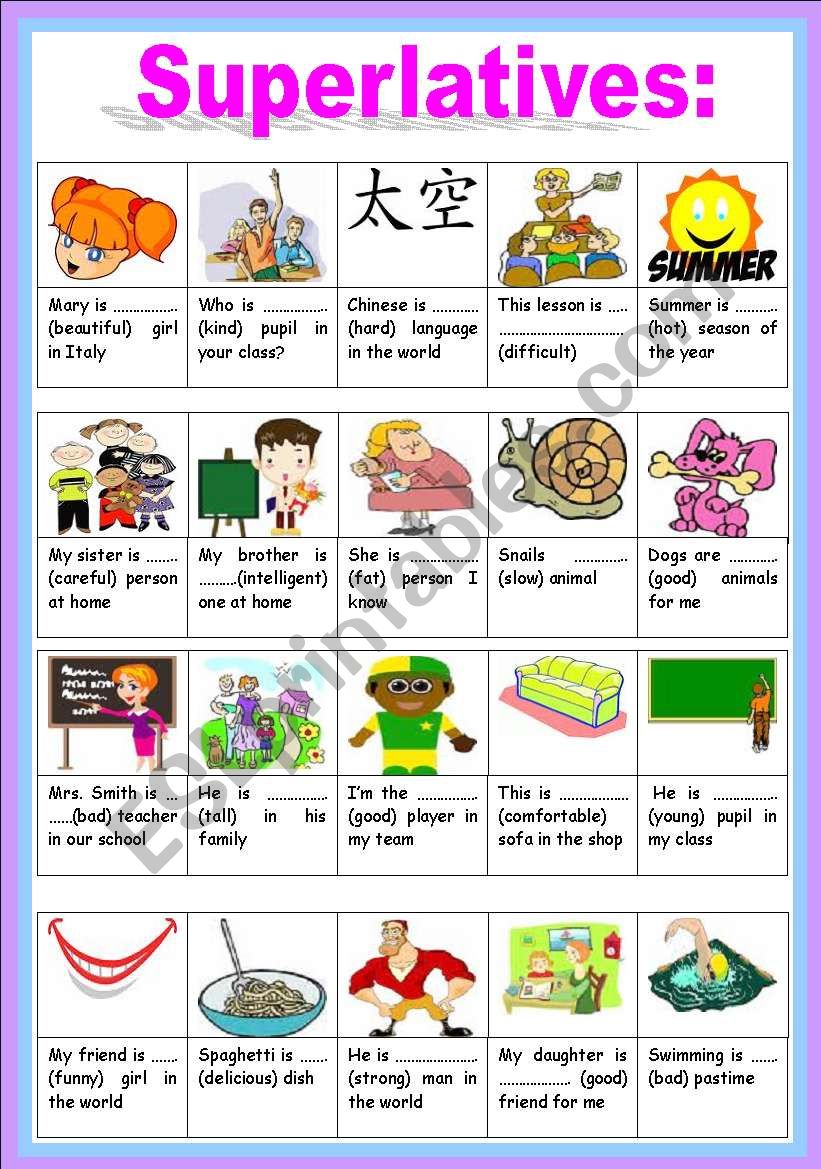
- Structured Practice and Reinforcement: Unlike casual exposure to language, a worksheet provides targeted exercises that focus solely on superlative forms. This repetition helps solidify the rules in the learner’s mind, moving them from conscious application to automatic usage. It allows learners to practice different types of adjectives and adverbs, ensuring they understand the various formation rules.
- Identification of Knowledge Gaps: As learners work through a worksheet, they inevitably encounter exercises that highlight areas of confusion. Perhaps they consistently forget to use "the," or they struggle with irregular forms. These specific errors pinpoint where further study or clarification is needed, allowing for more efficient and focused learning.
- Building Confidence: Successfully completing exercises on a worksheet provides a sense of accomplishment and builds confidence. As learners see their ability to correctly form and use superlative sentences grow, they become more willing to experiment with these forms in their spoken and written English.
- Self-Paced Learning: Worksheets are ideal for self-study. Learners can progress at their own pace, spending more time on challenging sections and quickly moving through those they understand. This flexibility makes them a valuable resource for independent learners or for use as homework assignments.
- Teacher Aid: For educators, a superlative sentences worksheet is a powerful diagnostic and teaching tool. It can be used to pre-assess students’ knowledge, provide in-class practice, assign homework, or even serve as a mini-quiz. The common errors observed on worksheets can inform future lesson planning, allowing teachers to address widespread misconceptions.
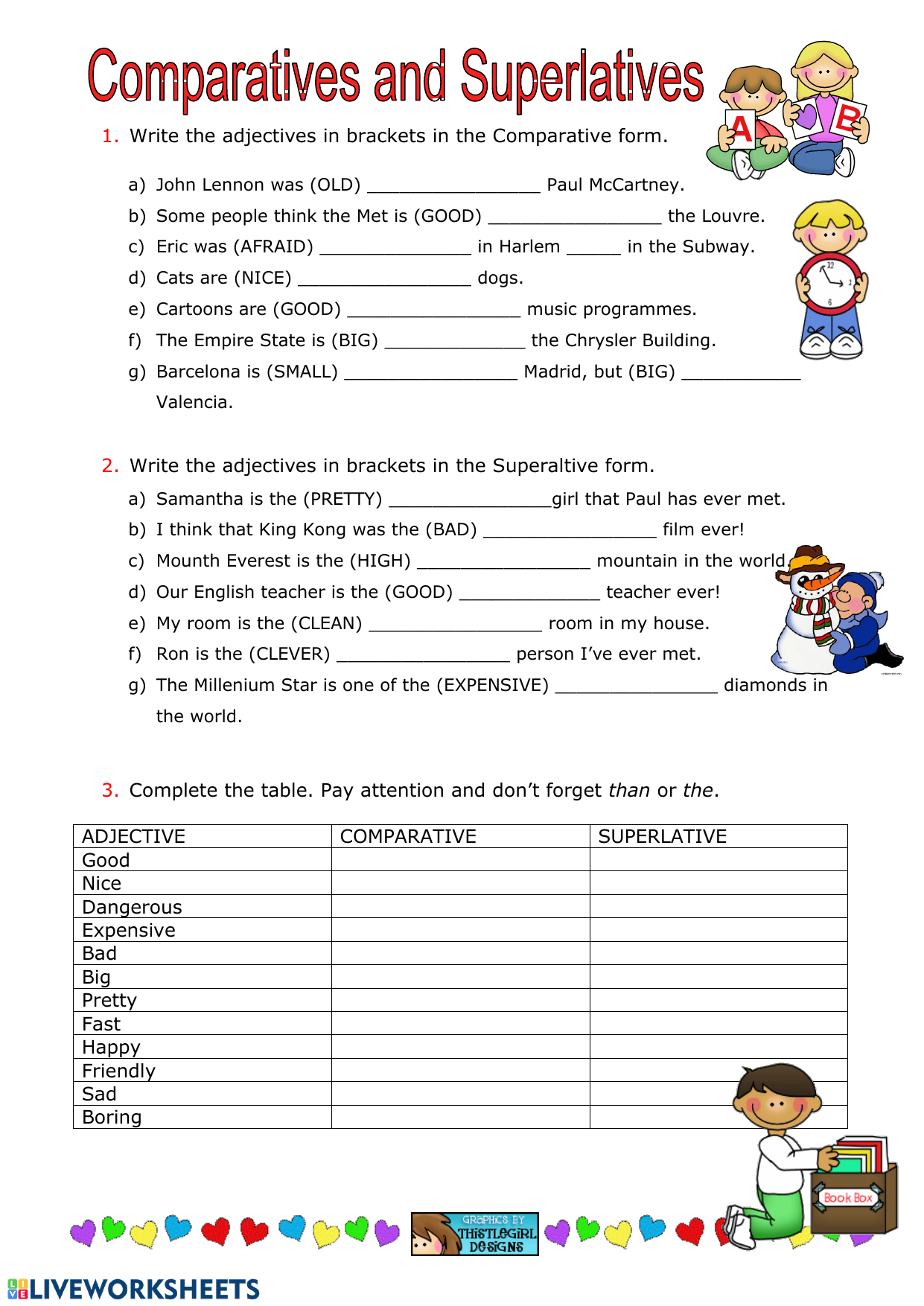

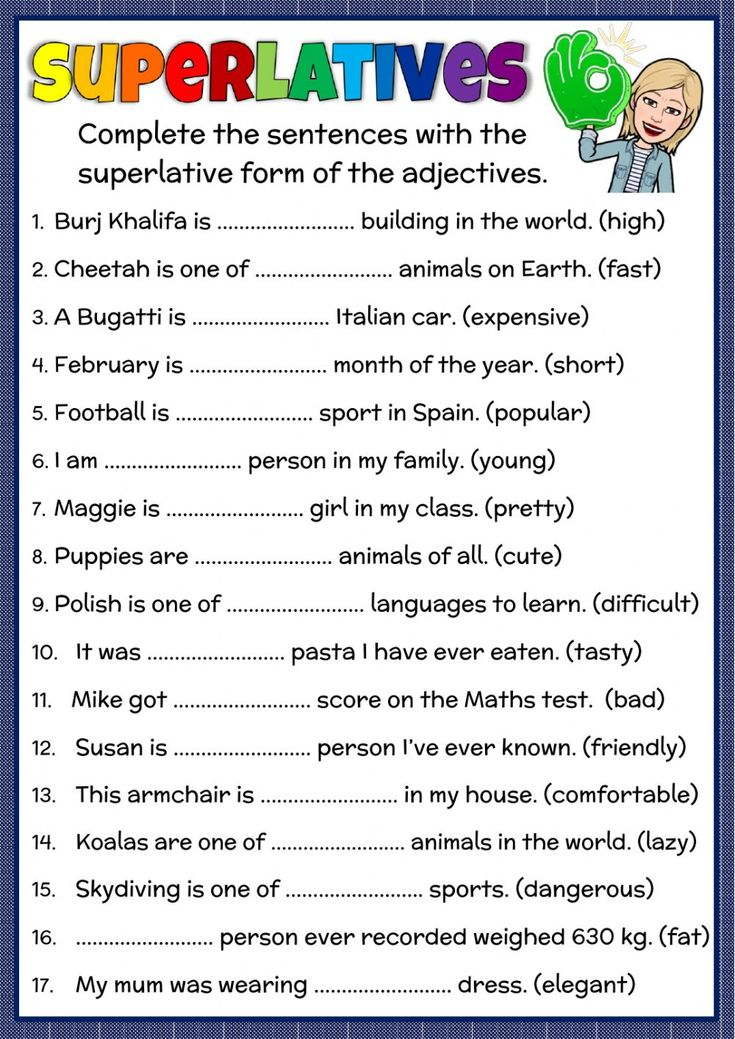
Key Components of an Effective Superlative Sentences Worksheet
Not all worksheets are created equal. A truly effective superlative sentences worksheet incorporates several key design principles to maximize its learning potential:
- Clear Instructions: Ambiguous instructions lead to frustration. Each section should clearly state what the learner needs to do (e.g., "Complete the sentence with the superlative form of the adjective in parentheses," "Rewrite the sentences using superlative adjectives").
- Variety of Exercise Types:
- Fill-in-the-Blanks: The most common type, where learners insert the correct superlative form.
- Sentence Transformation: Learners rewrite sentences, changing comparative forms to superlative, or vice-versa, or simply making a sentence superlative.
- Error Correction: Learners identify and correct mistakes in sentences containing superlatives. This is excellent for developing critical thinking and attention to detail.
- Sentence Creation: Learners are given a word or a scenario and asked to create their own original sentences using superlatives. This encourages creativity and application.
- Contextualized Scenarios: Exercises embedded in relatable situations (e.g., describing family members, comparing cities, reviewing movies) make the grammar more meaningful and memorable.
- Open-Ended Questions: Prompting learners to use superlatives in short answers or descriptions (e.g., "What is the most beautiful place you’ve ever seen?").
- Gradual Difficulty Progression: Start with simpler, regular forms, then introduce irregular forms, and finally move to more complex sentences or contextualized paragraphs. This scaffolded approach prevents overwhelming the learner.
- Inclusion of Irregular Forms: Dedicated sections or mixed exercises that specifically target "good/best," "bad/worst," "far/farthest," etc., are crucial, as these are often sources of error.
- Emphasis on "The": Many exercises should implicitly or explicitly require the use of "the" before the superlative to reinforce this vital rule.
- Answer Key: An essential component for self-correction and independent learning. The answer key should be clear and easy to follow, allowing learners to check their work immediately.
- Engaging Content and Visuals: While grammar can be dry, incorporating interesting facts, relatable topics, or simple illustrations can make the worksheet more appealing and less daunting.
Maximizing the Benefits: How to Use a Superlative Sentences Worksheet Effectively
For learners, merely completing a worksheet isn’t enough. To truly benefit, they should:
- Read Instructions Carefully: Before starting, ensure full understanding of each task.
- Attempt All Exercises: Even if unsure, try to apply the rules learned. This helps identify specific areas of weakness.
- Use the Answer Key Wisely: Don’t just copy answers. After attempting the entire worksheet (or a section), check answers and analyze mistakes. Understand why an answer was wrong.
- Revisit Challenging Sections: If a particular rule or type of exercise was difficult, re-do similar problems or seek out additional practice.
- Integrate with Other Skills: After completing the worksheet, try to use the newly practiced superlatives in speaking and writing. Describe something using three superlative adjectives, or write a short paragraph comparing several items.
- Seek Feedback: If possible, have a teacher or a more proficient speaker review your work or discuss your answers.
For teachers and parents, when assigning or creating a worksheet:
- Pre-teach or Review: Ensure students have a foundational understanding of superlatives before giving them a worksheet.
- Model Examples: Work through a few examples together before independent practice.
- Monitor and Provide Support: Circulate the classroom, offering help and clarification as needed.
- Discuss Common Errors: After collecting worksheets, address the most frequent mistakes as a group. This reinforces learning for everyone.
- Vary Worksheets: Use different types of worksheets to keep practice fresh and cover various aspects of superlative usage.
Common Pitfalls a Worksheet Helps Overcome
Several common errors plague learners when using superlatives. A well-designed superlative sentences worksheet explicitly targets these issues:
- Double Superlatives: The infamous "most tallest" or "most biggest." Worksheets can include sentences with these errors for correction.
- Missing "The": Often, learners forget the definite article. Exercises requiring full sentence formation can emphasize this.
- Confusing Comparative and Superlative: Deciding whether to use "-er" or "-est," or "more" or "most." Worksheets can present scenarios where learners must choose the correct degree of comparison.
- Incorrect Irregular Forms: Using "goodest" instead of "best." Dedicated drills on irregulars are vital.
- Misplacing "Most/Least": Incorrectly placing "most" after the adjective (e.g., "beautiful most").
By systematically exposing learners to correct forms and common errors, a superlative sentences worksheet acts as a powerful corrective mechanism, guiding them towards accurate and fluent English.
Conclusion
In the journey of mastering English grammar, the ability to express extremes is not just a stylistic flourish but a necessity for clear, impactful communication. From comparing the heights of mountains to describing the most exhilarating experience of one’s life, superlatives are an indispensable part of our linguistic toolkit. While understanding the rules is the first step, true mastery comes through consistent and deliberate practice. This is precisely the role of a high-quality superlative sentences worksheet. It provides the structured environment, varied exercises, and targeted reinforcement necessary for learners to confidently navigate the complexities of superlative forms, transforming grammatical concepts into intuitive language use. For anyone looking to solidify their grasp of these extreme descriptive words, investing time in a comprehensive superlative sentences worksheet is undoubtedly one of the most effective paths to success.
